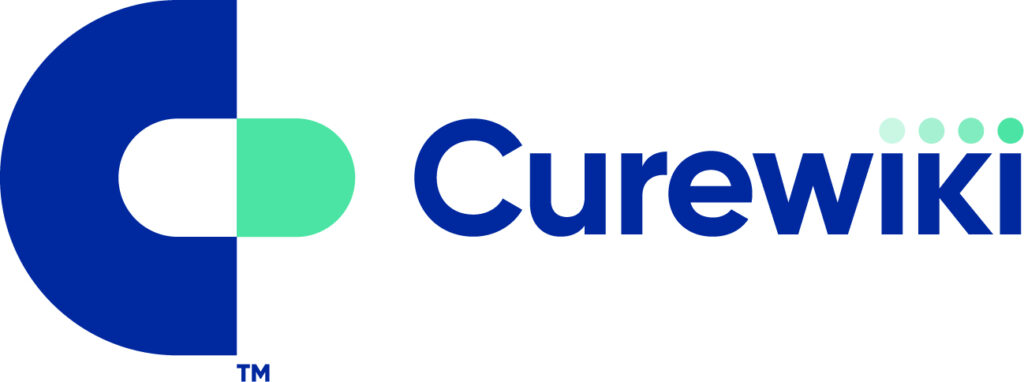8th PATIENT CENTRICITY & COLLABORATION WORLD CONGRESS 2026 EUROPE
A strategic approach prioritising the patient's needs, preferences, and values from drug development to treatment and beyond.
Hilton London Kensington, London, UK
Day 1 - Tuesday 25th February 2026
TRENDS & STRATEGIES IN PATIENT CENTRICITY AND COLLABORATION
- What are the main internal and external barriers to achieving genuine patient centricity?
- What are the key elements for creating an authentically patient-centric company culture?
- What are the challenges and opportunities in shifting to a patient-centric mindset?
- How can a patient-centric culture improve patient access and transparency?
- How can patients be meaningfully involved in the drug development process, from early research to post market surveillance?
Moderator:
Panelists:
 Tom Croce, Vice President, Global Patient Advocacy, Jazz Pharmaceuticals
Tom Croce, Vice President, Global Patient Advocacy, Jazz Pharmaceuticals
 Carole Scrafton, Director & Co-Founder, Flutters and Strutters
Carole Scrafton, Director & Co-Founder, Flutters and Strutters
- Many biotech/pharmaceutical companies are talking about ”Patient Centricity”, but how can a company actually operate in a patient-centric way to create meaningful value?
- Learn best practices to transition from being product centered to patient centered
- Discuss strategies to embed patient centricity throughout your organization.
 Gabor Purman, Patient Advocacy Director, Kyowa Kirin
Gabor Purman, Patient Advocacy Director, Kyowa Kirin
 Ify Osunkwo, Chief Patient Officer Rare Disease, Novo Nordisk Rare Disease
Ify Osunkwo, Chief Patient Officer Rare Disease, Novo Nordisk Rare Disease
- Patient Centricity requires new mindsets, relationships – and structures, company-wide. No stage of development, from discovery through delivery, gets a pass.
- No company function continues as before. Company culture changes, too.
- This isn’t easy but the results are worth the journey: to improve outcomesfor patients and business performance alike.
- If Patient Centricity is a fad, then it’s a failure.It should be the new way of doing business.
 Dr Anthony Yanni, SVP and Global Head of Patient Centricity, Astellas Pharma*
Dr Anthony Yanni, SVP and Global Head of Patient Centricity, Astellas Pharma*
- Understanding complexities and addressing challenges faced by the industry in setting up end-to end supply chain for cell and gene therapies
- Best practices and lessons learnedthat guarantees effective manufacturing and deliveryof CGTs to the patients who needs them the most
- Robust technologies and innovative platformsthat connects therapieswith patients both in clinicaland commercial scale
RESERVED:
- Advantages of forming forming strategic partnerships
- Addressing potential issues early in the development phase
- How will it optimize resource allocation and reduce development costs
- Implications for the patients who will ultimately use the medicines they manufacture.
 Emily Pickering, Specialist Commercial Services Lead, Patient Engagement in Clinical Development, NIHR Research Delivery Network
Emily Pickering, Specialist Commercial Services Lead, Patient Engagement in Clinical Development, NIHR Research Delivery Network Isabella Darbyshire, Specialist Commercial Services Manager, Patient Engagement in Clinical Development, NIHR Research Delivery Network
Isabella Darbyshire, Specialist Commercial Services Manager, Patient Engagement in Clinical Development, NIHR Research Delivery Network
![]()
- Understand where patientcentricity can advancethe interests sharedby industry and the patientcommunity Consider how focused goals and programs can strengthen research and development, commercialization and access
- Focus on opportunities to integrate patients,caregivers, consumers and advocates’ key concerns and insights into company plans and decision making
- Discuss applications of this targeted approachto your patientcentricity goals and programs
Reserved
Afternoon Stream Sessions
ACCESS & COLLABORATION
 Gunnar Philipp, Head of Medical Affairs Europe MajorMarkets and Canada, CSL
Gunnar Philipp, Head of Medical Affairs Europe MajorMarkets and Canada, CSL
- Co-creating an innovative methodology
- Designing meaningful research tools
- Partnering for local impact
- Collaborative validation
- Co-creating the GENS publication
 Claire Nolan, Head of Engagement, International Bureau for Epilepsy
Claire Nolan, Head of Engagement, International Bureau for Epilepsy
- Across the spectrum of disease, from common to
rare,patient data is becoming a critical driver of
drug discovery, development, diagnosis,
commercialization and inclusive and equitable
access to trials and treatments.
- This resolution is not just symbolic. It provides a concrete, evidence-backed roadmap for engaging patients, people with lived experience, healthcare providers, and civil society in a structured, measurable, accountable and resourced way in health system design, delivery and decision making. It is an opportunity to reshift focus on the health outcomes that matter –too often health is done to people, not with people. And it’s an opportunity for the patient community to claim its
space once and for all.
 Amanda Bok, Chief Partnership Officer, The Synergist
Amanda Bok, Chief Partnership Officer, The Synergist
- Common barriers to access
- Strategies to address barriers to access
 Josie Godfrey, Co-Founder and CEO, Realise Advocacy
Josie Godfrey, Co-Founder and CEO, Realise Advocacy
- To raise awareness of how digital literacy gaps fuel health inequalities across Europe.
- To show why pharma has a stake in closing this divide — for better patient outcomes, trust, and equitable access
- To share practical strategies and partnerships where pharma can lead, influence, and innovate responsibly.
 Becky Warnes, Public Affairs and NHS Liaison
Becky Warnes, Public Affairs and NHS Liaison
Manager, Orion Pharma UK Ltd
- The illusion of inclusion
- What transformation looks like
- The cost of exclusion
- Creating space for truth and trust
- Why this matters for you?
 Daniel Newman, Patient Advocate, Trueheart
Daniel Newman, Patient Advocate, Trueheart
International
- Roles and responsibilities in achieving positive outcomes
- Key learnings from the evolving process
- Guiding principles for future partnerships.
 Steve Clark, Founder , Strive for Five
Steve Clark, Founder , Strive for Five
CLINICAL RESEARCH & TECHNOLOGY
 Robert Mitchell-Thain, CEO, PBC Foundation
Robert Mitchell-Thain, CEO, PBC Foundation
- Reconsider terminology to reframe activity
- Prioritise engagement that leads to involvement and subsequent participation (listen-ask-invite)
- Shift thinking from ‘patient’ involvement to ‘potential participant’ involvement (PPIE becomes EIPP)
- Invest in ‘foresight’ as a valuable commodity
 Lorna Allen, Senior Involvement Manager, Cystic Fibrosis Trust
Lorna Allen, Senior Involvement Manager, Cystic Fibrosis Trust
- Layering patient generated health data with clinical data
- Building insights across all diverse patient profiles
- Move beyond evidence for clinical trial participants only
 Mark Bradley, CEO, PeopleWith
Mark Bradley, CEO, PeopleWith
- Why patient voice matters: shifting from researcher- centric to participant-driven research design.
- The challenge today: trials often start late, and participants struggle to find relevant opportunities — a reality our platform helps address.
- How The Patient Voice Database works: simple profile creation, matching to relevant opportunities, full control and consent for participants.
- Key benefits: for patients (access, control), and for researchers (better recruitment, representativeness, efficiency).
- Practical examples and early results: Belgium as pilot country; thousands registered; next steps for broader deployment.
Jean-Sébastien Gosuin, Founder, Curewiki

- Contributions that advocacy group scan make to clinical trial development
- The importance of knowing the people, their disease, and its burdens
- Successful collaborations are a win for all
Greg Robertson, Sr Director, Patient Advocacy, Global Rare & Clinical Dev’t., Alnylam
- Addressing logistical challenges crucial for better participation and retention
- Enhance reported outcome measures and quality of-life assessments
- Why the vast majority of clinical trials run into
problems of recruiting participants - What you can do to solve these issues and improve
your overall recruitment strategy - This presenation will include a mix of case studies,
real world examples from different clinical trials and
provide specific to do’s to improve the patient
recruitment for your clinical trial.
 Rasmus Hjorth, Patient Engagement Director, James
Rasmus Hjorth, Patient Engagement Director, James
Lind Care
6:15 - 7:15 pm - NETWORKING DRINK RECEPTION




